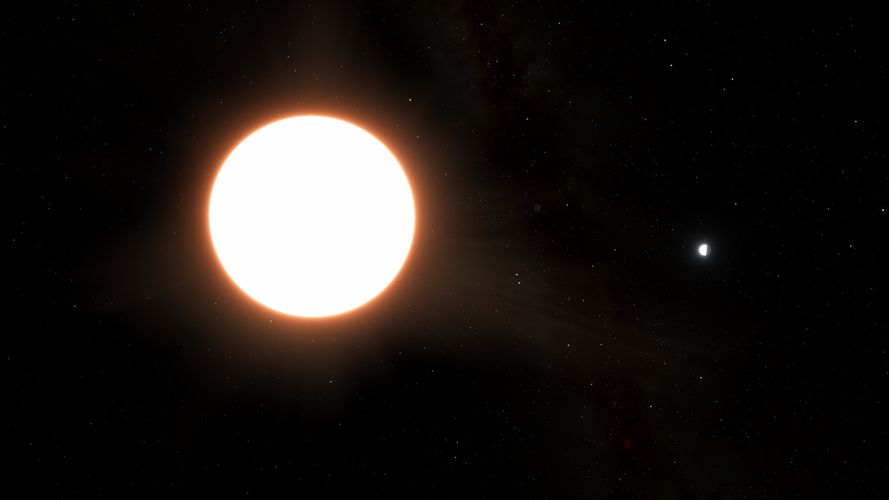

Access the video
Studying an exoplanet by looking when it’s hidden
To determine LTT9779 b’s properties, ESA’s exoplanet-characterising Cheops mission looked when the planet moved behind its host star. Because the planet reflects light, the star and planet combined send more light towards the space telescope right before the planet is out of view than right after. The difference in visible light received right before and after the planet is hidden tells you how much light the planet reflects.
This project relied on Cheops’ precision and 24/7 coverage. “Precisely measuring the tiny change in signal from the star eclipsing the planet was only possible with Cheops,” says Sergio.
ESA’s Cheops project scientist Maximilian Günther adds: “Cheops is the first ever space mission dedicated to the follow-up and characterisation of already known exoplanets. Unlike large survey missions focused on discovering new exoplanet systems, Cheops has enough flexibility to swiftly focus on interesting targets and can reach a coverage and precision that we often simply cannot get any other way.”
By looking at the same exoplanet with different instruments, we get the full picture. “LTT9779 b is an ideal target for follow-up with the exceptional capabilities of both the Hubble and James Webb space telescopes,” notes ESA science operations scientist Emily Rickman. “They will allow us to explore this exoplanet with a wider wavelength range including infrared and UV light to better understand the composition of its atmosphere.”
The future of exoplanet research is bright, as Cheops is the first of a trio of dedicated exoplanet missions. It will be joined by Plato in 2026, which will focus on Earth-like planets orbiting at a possibly life-supporting distance from their star. Ariel is set to join the fleet in 2029 and will specialise in studying exoplanet atmospheres.



